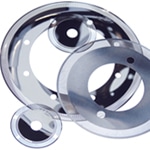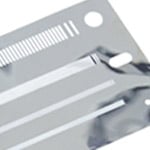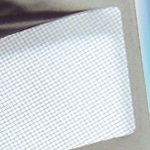What is Electroforming?
Electroforming is an additive process in which nickel is deposited in a platting process around a substrate created from a photolithographic pattern. This forms a self-supporting structure with consistent surface finishes and dimensional stability.
Electroforming allows parts to be created with tight tolerances (up to +/- 2 µm), superior edge finishes, and ultra-fine features (as small as 15 µm). The average parts produced range from .001 inch (25 µm) to .006 inch (15 µm) thick. If necessary, they can be made as thin as .0003 inch (8 µm) to as thick as .006 inch (150 µm). These parts can be produced in material panels as large as 20 x 20 inches.
The nickel composition used in electroforming can be specified to meet certain requirements, including the degree of hardness, finish and brightness, and malleability.
Parts, including screens that need structural support in ultra-thin layers, can be produced using multi-level designs and support grids.
The advantages of Electroformed Parts and Screens
- Parts can have mirror-like finish on front and back
- No visible grain direction
- Tab free parts
- Tolerances generally +/- .0003” (8 µm) but vary slightly by application
- Low Cost Tooling
- Quick turnaround time, generally less than 2 weeks
Typical Products
- Metal Encoders Wheels
- Electroformed Screens
- Lead Frames
- Printer Components
- Shadow / Deposition Masks
- Micro Filters
- Micro Valves
- Wire Mesh (as small as 1,000 mesh)
- Molds
- Sieves
Markets / Industries
- Filtration
- Medical
- Electronics
- Masking
- Avionics
- Aerospace
- Life Sciences
- Electronics
- Textile
- Printer









